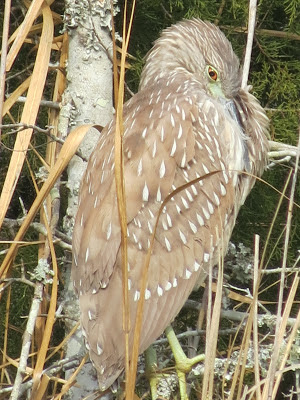Happy New Year! I hope you have many enjoyable nature outings and adventures in 2013.
We are fortunate in South Carolina to have several wildlife refuges in the state's Lowcountry. Several are former rice plantations located in the ACE basin. This is a large protected region named for the confluence of three rivers, the Ashepoo, Combahee and Edisto.
I've posted previously on some of the other locations that are part of this system: Bear Island and the Hollings National Wildlife Refuge, for example. The other day Alesia and I drove down to the Donnelley Wildlife Management Area (WMA) in remote Green Pond, S.C.
We are fortunate in South Carolina to have several wildlife refuges in the state's Lowcountry. Several are former rice plantations located in the ACE basin. This is a large protected region named for the confluence of three rivers, the Ashepoo, Combahee and Edisto.
I've posted previously on some of the other locations that are part of this system: Bear Island and the Hollings National Wildlife Refuge, for example. The other day Alesia and I drove down to the Donnelley Wildlife Management Area (WMA) in remote Green Pond, S.C.
I had been to Donnelley a few times before. This was the first time in the winter, and it proved to be the best as far as the abundance of birds. We first saw a number of Common Moorhens in a swamp a short ways from the entrance to the 8,000 acre preserve. Whatbird.com describes the Moorhens as a chicken-like marsh bird distinguished by the red shield-like plate above its bill. It also has a distinctive yellow tip on its bill.
Donnelley has a large pond that, on this day, had a nice variety of birds in and around it, including these Great Blue Herons. This large bird, always so photogenic and picturesque, was especially so with the neat reflections and when they passed or stood near each other.
This next shot looks like it was done in time elapsed exposure. It wasn't. It's two Great Blue Herons and a neat reflection.
On a small island there were a number of Black-crowned Night Herons, many of which seemed to be in slumber mode.
We tried to be quiet so as to not wake or disturb them!
The juvenile of this species looks so different than the adults. What a beautiful plummage and eye coloring the young ones have!
I also liked this pair of Boat-tailed Grackles. They were very busy with lots of calling and keeping their bills to the sky.







